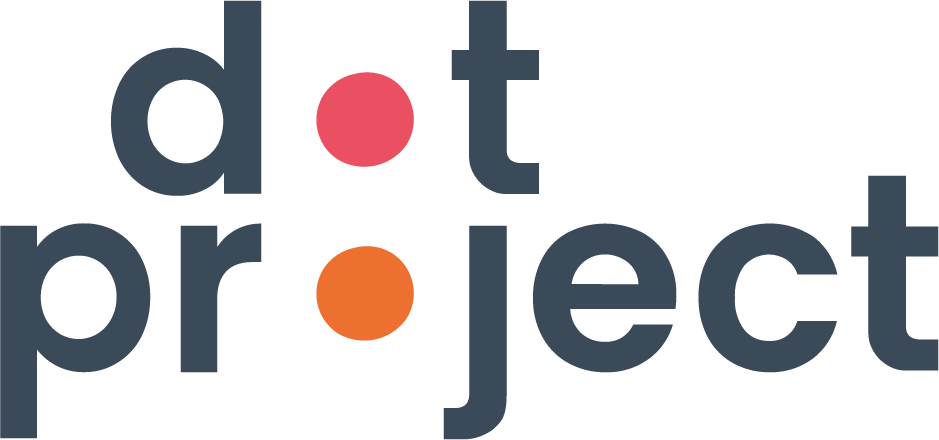Dot Project Partnerships: How to build relationships, not temporary connections
In this blog we’ll share insights into our relationship building process and why we start with alignment when entering new partnerships. We believe every partnership changes us as individuals and as an organisation, influencing us to learn and grow. At Dot Project, we seek to create long lasting connections with our partners, and between our partners and clients.
We don’t think of partners in the traditional sense; as a commercial relationship to grow respective businesses. In fact, through a legal lens, partners we work with could be seen more like suppliers, as we hold a deep belief that everyone who works with us enables our impact in the social sector. Part of our responsibility as Dot Project is to work with partners who have the right culture and skills to fulfil our clients’ needs. We should complement each other on these dimensions too, with common ground in our mindset and the impact we seek to achieve, as well as the skills and experience we hold.
WORKING IN PARTNERSHIP
29 of the 131 projects we have delivered since 2017 have been in partnership with other Technology Experts and Organisational Coaches. We have learned that organisations seeking to build their digital resilience must look beyond their technology to their teams, with a focus on building more alignment. Where a Technology Expert can help you identify issues with technology and its use within your organisation, an Organisational Coach will work alongside your team to help them navigate change and any new uses of technology.
These partnerships sit so central to Dot Project’s work with clients, that we place a natural emphasis on building and maintaining relationships. Our experience tells us that communication, teamwork and empathy, the ‘soft’ skills often considered ‘nice to have’, are in fact essential when building meaningful relationships.
It’s a common misconception that strong relationships mean smooth journeys and constant agreement across parties. But, in reality, we’ve seen major breakthroughs where partners can honestly express concern or trepidation from their own perspective. We therefore believe the strongest relationships are built on foundations of trust and where the conditions are in place for difficult conversations, openness and transparency. We must be cognisant that relationships with individuals and other organisations evolve and that they need to be kept ‘alive’ through regular conversation and connection.
BUILDING HEALTHY RELATIONSHIPS
Of course, the process of building healthy relationships depends on each partner and their unique characteristics, experience and skills. Some partnerships, like our one with The Data Place, require time at the beginning, to ensure both parties are aligned on eachothers purpose and mission. Other relationships might rely more on regular and clear communication; this was the case with our Comic Relief programme, where expert partners were kept in the loop with weekly reporting rhythms.
Through the leadership of Alex Mecklenburg and her expertise in relational coaching we have developed a framework to guide how we build relationships. We now embed coaching practices into our work with teams and partners, and Annie and Cat have both completed the Fundamentals of ORSC course to build their own confidence and skills.
As with most things a solid start is beneficial. So, in early stage conversations with partners we carry out a “partner alignment session”, enabling us to openly surface:
1) The skills and expertise we each bring to the engagement.
This helps us to easily identify gaps and overlaps, without having to make any assumptions.
2) Our high and low dreams.
This lets us explore what we hope will and won’t happen as a result of our work together. It’s often a high energy conversation where we consider desired outcomes for ourselves, for our organisations and for the client. The low dreams are often the most revealing, surfacing deep concerns and reservations!
3) The strong partnership enablers.
Often with minimal effort we can put in place practices to set up partnerships to thrive: practices that actively enable open communication, shared commitment and agreed space of compromise. These differ with every partner so it’s important to define them for every project.
4) How we might mitigate partnership barriers.
Proactively exploring conflicts in availability, capacity, priorities etc. from the beginning, helps us to overcome common partnership challenges.
5) Our preferred ‘ways of working’ and what practices are needed to support this.
It’s important not to impose a certain way of working upon others, so we always explore how best to practically work with partners, given our shared preferences and the project’s context. This can get as detailed as outlining roles and responsibilities, how and when we will communicate, what tools we will use, how regularly we’ll check in and how we will communicate with a funder or client.
The process takes our partnerships beyond a transactional relationship by creating the space to approach and hold each partnership in a unique way. It respects the nuances of each individual and organisation, and considers the context of the specific project we are working on together.
Starting our projects in this way often comes as a surprise to our partners and the openness of the process can bring initial resistance. However, by understanding each other and exploring what our partnership together really means, we are able to discuss and surface information that may otherwise steer our partnership journey off track.
Working in partnership is often hard and it requires bravery! It’s much easier to spot the tensions of a partnership built on shaky foundations than the impact of strong and well coordinated relationships. We champion working in partnership because we believe replacing distrust and a lack of openness, with deep alignment brings much needed skills to the social sector.
What’s your experience of working in partnership? Do you have any reflections on the importance of relationship building and alignment in partnerships you’ve been part of?
If you’re interested in working in partnership with us in the future, we’d love to hear from you.
